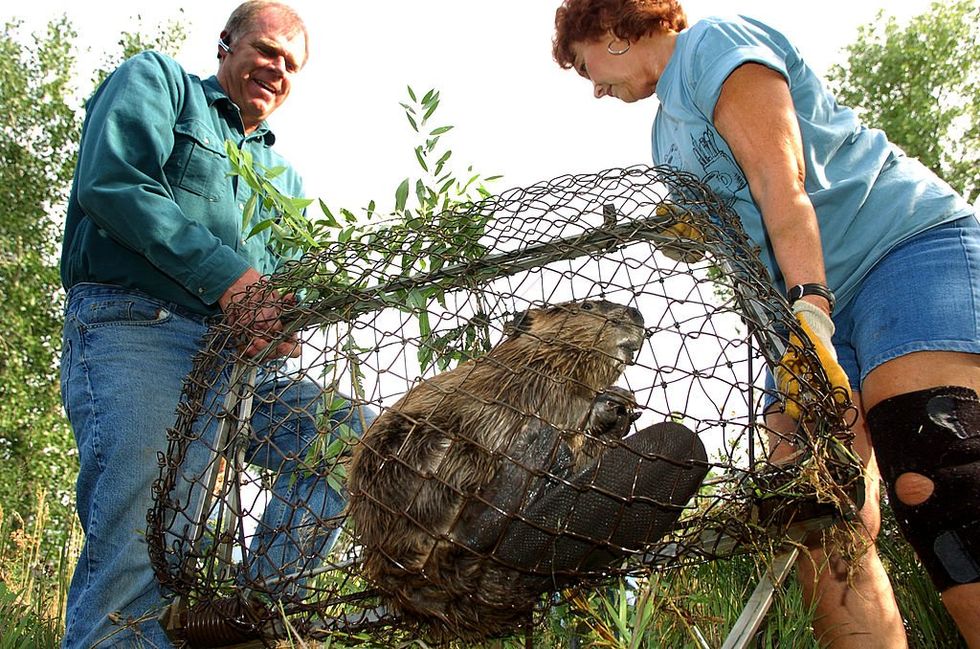
This article was originally published on Blaze Media. You can read the original article HERE

In America, we love poultry and beef.
Ninety percent of us consume chicken, averaging about 90 pounds per person annually. Beef is a bit less popular but still substantial. Americans eat around 60 pounds per person per year.
'To be completely honest, if you want the taste of a beaver, go outside, grab some tree bark and yard clippings, cover them in BBQ sauce, and take a bite.'
By contrast, only 25% of us regularly indulge in lamb — just one pound per person per year of this nutrient-dense meat. And if you narrow that group further, you’ll find the rare breed of super-carnivores who eat beaver.
Skin your own
Andy Hickman, a seasoned trapper, offers this perspective: “I have no idea why people don’t eat beaver meat more often. Trappers often give it away in big buckets, sometimes for free, and trapping seasons and bag limits are generous in many states. It’s tremendously nutritious and tasty — at pennies on the dollar.”
I reached out to Hickman, who is working on an article about beaver meat. He suggested I “spend some time trapping beavers, or at least with some trappers,” adding that “by skinning and cooking a beaver yourself, and tasting the meat, you’d learn all you need to know for your assignment.”
The idea was unappealing — not because I shy away from unusual food. I’ve tried alligator in onion-ring form and tasted a range of alternative cuisines during my stint as an English teacher in Spain: blood sausage (delicious), pig’s feet (gross), bull’s tail (like pot roast), tripe stew (good for hangovers), and lamb intestines (very chewy).
My hesitation lies in the hunting aspect. I should hunt, given my prolific meat-eating, but I find myself unable to.
Still, if a beaver were to attack one of my kids, I’d certainly fire up the grill. But there’s another question: Aren’t beavers supposed to be laid-back and cool?
Trapper keepers
Beaver meat holds deep historical significance in North America. For Native Americans, beavers were a crucial food source, providing both meat and fur. Their reverence for the animal dates back to at least the 1400s.
As European settlers moved westward, beaver meat gained new appreciation. The beaver population dwindled as the animals were trapped out of the East Coast, with settlers pursuing them farther west. In the 1800s, Lewis and Clark detailed beavers in their journals, including a recipe for beaver bait and preparation instructions.
The Catholic Church even weighed in on the dietary status of beavers. In the 17th century, it classified beavers as “aquatic mammals,” allowing Catholics to consume their meat during Lent and Fridays when they abstained from land-based meat. This classification led to a spike in beaver meat consumption.
Tail to testicle
Despite its history, finding someone who has eaten beaver meat is surprisingly difficult. Even among my most dedicated hunter friends, there are few who have tasted it.
One friend mentioned that while he’s killed beavers, he’s never eaten them. He noted that “mountain man writings always said beaver tail was the best meat around,” though he added that a beaver is "basically a rat that eats bark.”
Quora users offer mixed reviews: “To be completely honest, if you want the taste of a beaver, go outside, grab some tree bark and yard clippings, cover them in BBQ sauce, and take a bite. It seriously tasted like a tree with BBQ sauce. I would say to try it just to say you’ve tried it, but it’s nasty. It was tough, oily, and just nasty.”
The oldest edition of "The Joy of Cooking" included a beaver recipe. Beaver tail, once a delicacy, was praised for its fattiness, likened to pork or fatty beef cuts.
Historically, beaver meat was versatile, featured in stews, roasts, and smoked dishes, with its richness best showcased through slow cooking.
Today it's a rare find in mainstream markets but remains a delicacy in certain regions, particularly among trappers and in rural communities across Canada and the U.S. Specialty game markets and wild game dinners occasionally feature it.
Beaver is definitely on the menu at Exotic Meat Market, a California-based company that sells a wide range of exotic meats: emu, yak, raccoon, camel, shark, armadillo, rattlesnake, bobcat, antelope, iguana, possum, reindeer, turtle, and guinea pig.
Beaver-wise, the company offers everything from tail to testicles.
Perhaps beaver is due for a comeback. Might Michelin-star restaurants one day include roasted beaver tail on their menus? If beaver were more than just a historical curiosity and became a staple in our diet, could it reshape our culinary landscape? For now, the beaver remains an enigma — an intriguing symbol of history and taste, just a dam away from our everyday dining.
This article was originally published by Blaze Media. We only curate news from sources that align with the core values of our intended conservative audience. If you like the news you read here we encourage you to utilize the original sources for even more great news and opinions you can trust!










Comments